When most people see skipped stitches on their sewing machine, their first thought is usually panic. “Oh no, my machine is broken!”
But what if I told you that skipping stitches can actually be a stylish, decorative choice? With the right technique, those little gaps can add a unique touch. Curious how does sewing machine skipping stitches?
Well, it’s super easy,
To do skipping stitches on a sewing machine, select a skip stitch pattern or manually space your stitches by adjusting stitch length and guiding the fabric to leave intentional gaps.
Let’s turn what’s usually seen as a “mistake” into a fun design feature. like uneven stitches on sewing machine.
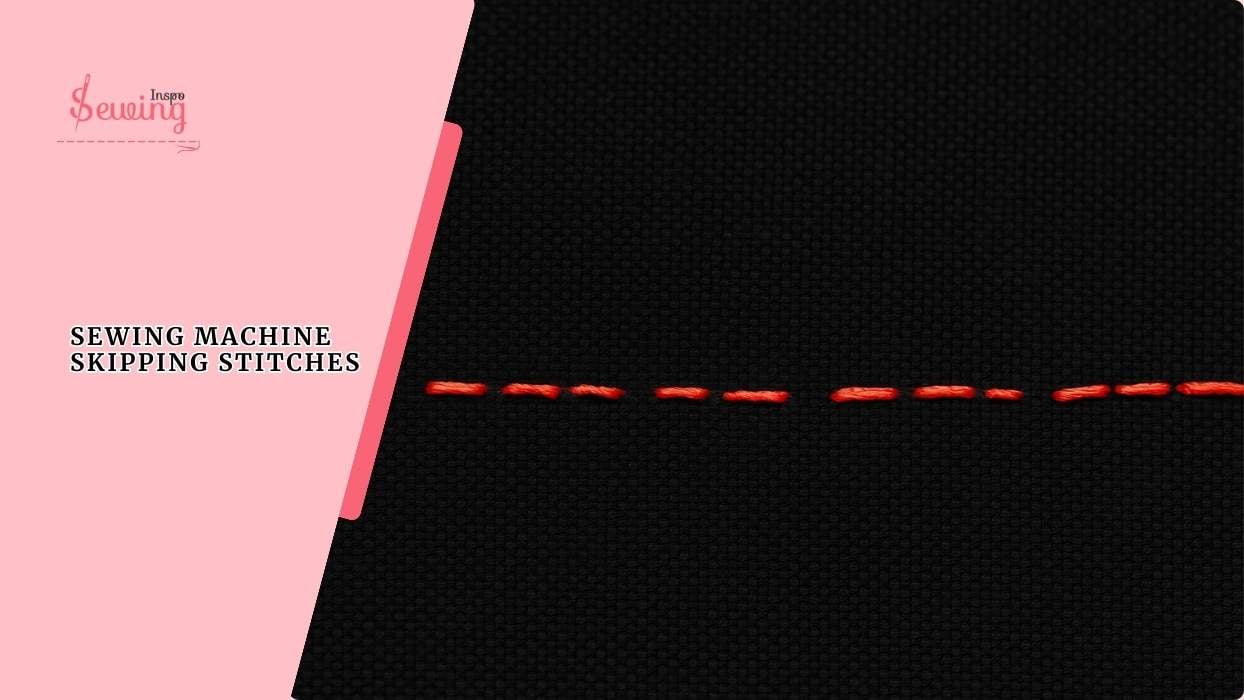
Table of Contents
Sewing Machine Skipping Stitches Tutorial
To do sewing machine skipping stitches, follow the steps below,
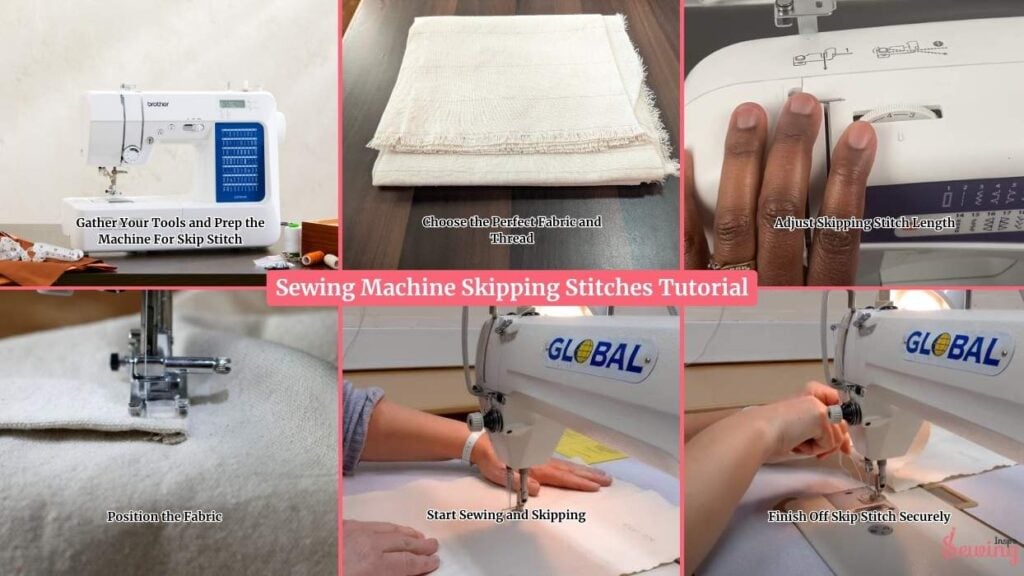
Gather Your Tools and Prep the Machine For Skip Stitch
I grab my sewing machine and make sure it’s all ready. I check the needle (using a universal or slightly heavier one if my fabric is thicker), and I thread it properly.

Some modern machines have a skip stitch or stretch stitch pattern built in.
The symbol looks like: __ __ __ (stitch-gap-stitch).
Check your stitch selector dial. It look for something called skip stitch, broken line stitch, or stretch stitch.
Choose the Perfect Fabric and Thread
Now, this is important. I like using medium-weight cotton, linen, or denim because the skipped stitches really show up nicely.
Too thin, like chiffon, and the gaps can distort the fabric; too thick, like heavy canvas, and it’s harder to manoeuvre like quilting.
I lay my fabric flat, smooth out any wrinkles, and grab a thread that contrasts a little with the fabric. So, the skipped effect pops like a bright thread on neutral cotton.
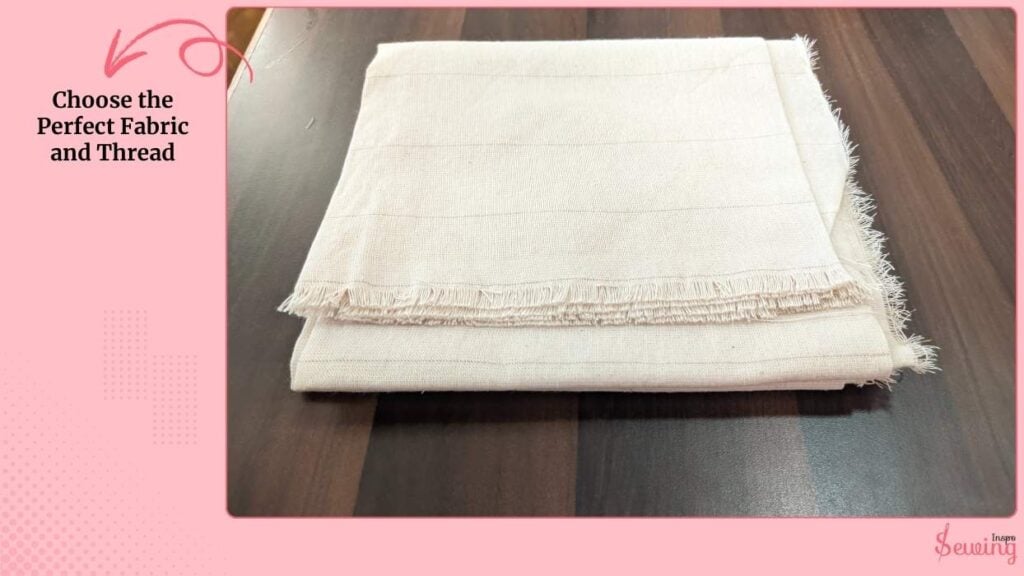
Adjust Skipping Stitch Length
Next, I tweak the stitch length. For a decorative skip stitch setting, I usually pick a stitch length of 3–4 mm to make the gaps clearly visible for skip stitches.
If I’m doing this manually, I set a straight stitch length of around 3–5 mm. This length helps me to do slip stitch on sewing machine too.
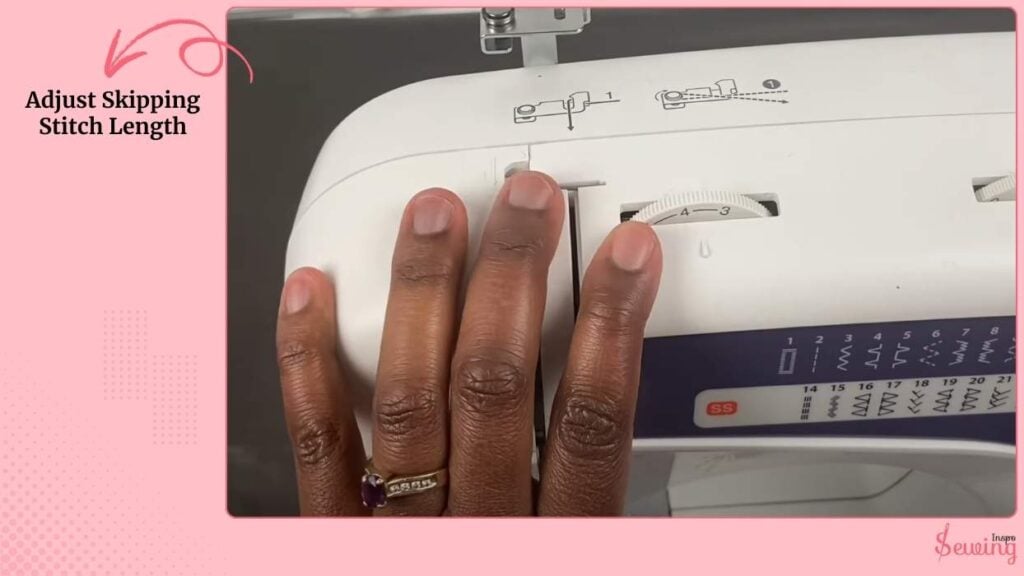
It gives me enough space to lift the presser foot and move the fabric for each “skip,” while keeping the skipped stitches even and neat.
Position the Fabric
I slide my fabric under the presser foot and gently lower it. I make sure I have enough space to lift the presser foot and guide the fabric between skipped stitches without tugging or stretching it.
This part is key to keeping my skips even and neat.
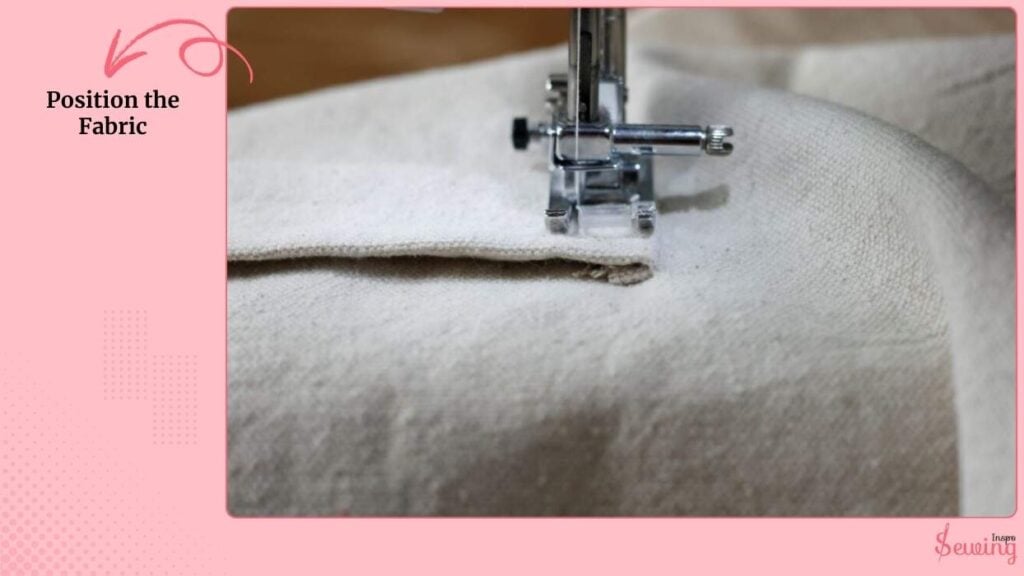
Start Sewing and Skipping
I just sew along, keeping a steady pace. The machine automatically leaves the little gaps. Love how easy that is.
I sew a few stitches, stop with the needle down, lift the presser foot, move the fabric forward exactly how much I want to skip, lower the foot, and continue sewing. I repeat this along my line, keeping the skips consistent.
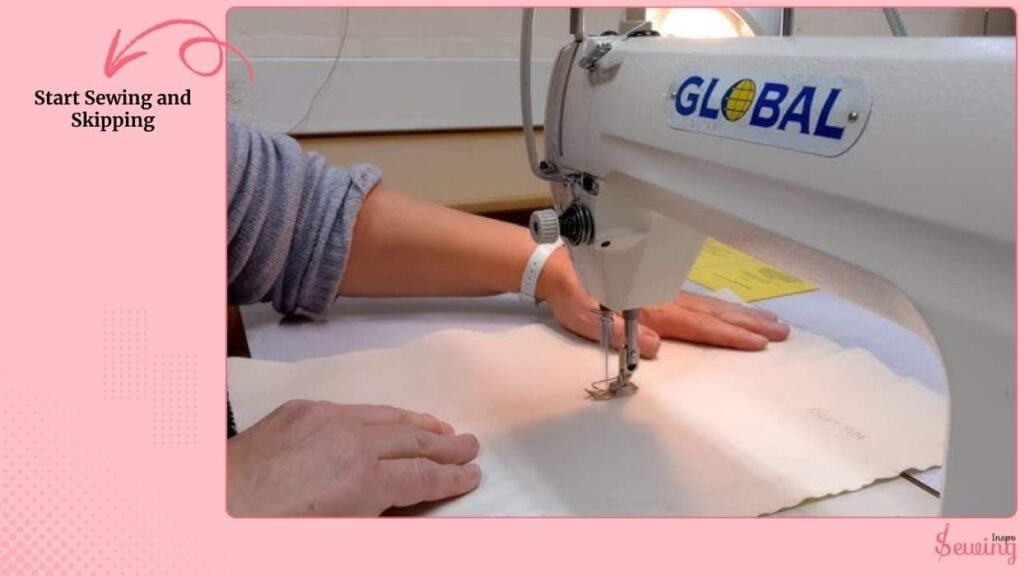
As I go, I keep an eye on the tension and stitch length, adjusting slightly if the skips are too tight or too wide.
Finish Off Skip Stitch Securely
When I reach the end, I pull the thread tail through the last stitch to lock it in place. Since skipped stitches can unravel easily, this step keeps everything intact.
I snip the thread neatly and admire the little gaps. It already looks so much more decorative!

How To Fix Skipped Stitches On A Sewing Machine?
Now, if you didn’t do this intentionally, and still your machine is doing it. Then it’s an issue & needs some attention. So here is how to fix this,
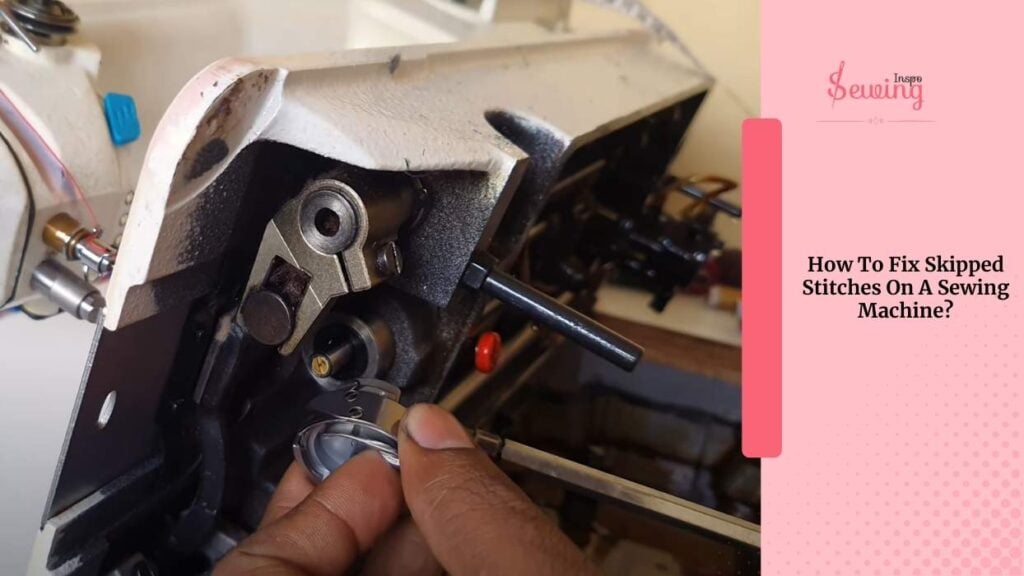
- Too tight or too loose tension can make stitches skip or jump.
- Using cheap or old thread can cause it to break or slip, resulting in skipped stitches.
- Avoid pulling or stretching the fabric while sewing.
- Lint or dust in the feed dogs or hook can interfere with stitching.
- Some fabrics require longer or shorter stitches; adjust accordingly.
Frequently Asked Questions
Why does my sewing machine keep skipping stitches?
Skipped stitches usually happen because of a bent or dull needle, wrong needle size, incorrect threading, or tension issues. Using the wrong needle for your fabric (like a universal needle on stretchy fabric) is also a common cause.
How do I stop my sewing machine from skipping stitches?
Check your needle first, replace it if needed, and make sure the machine is threaded correctly. Adjust the thread tension, use the correct needle/thread for your fabric, and keep the machine clean to prevent lint buildup.
Can fabric type cause skipped stitches?
Yes! Stretchy, slippery, or very thick fabrics can cause skipped stitches if you don’t use the right needle (like a ballpoint for knits or a denim needle for thick fabric). Always match the needle to your fabric type.
Warp up
I like to experiment. I try skipping stitches on different fabrics, linen, denim, even a soft flannel.
Notice how each fabric alters the look. I also pair it with zigzag or twin-needle stitching to add texture. Each time, the skipped stitches add a charming, handmade touch that appears intentional, not accidental.



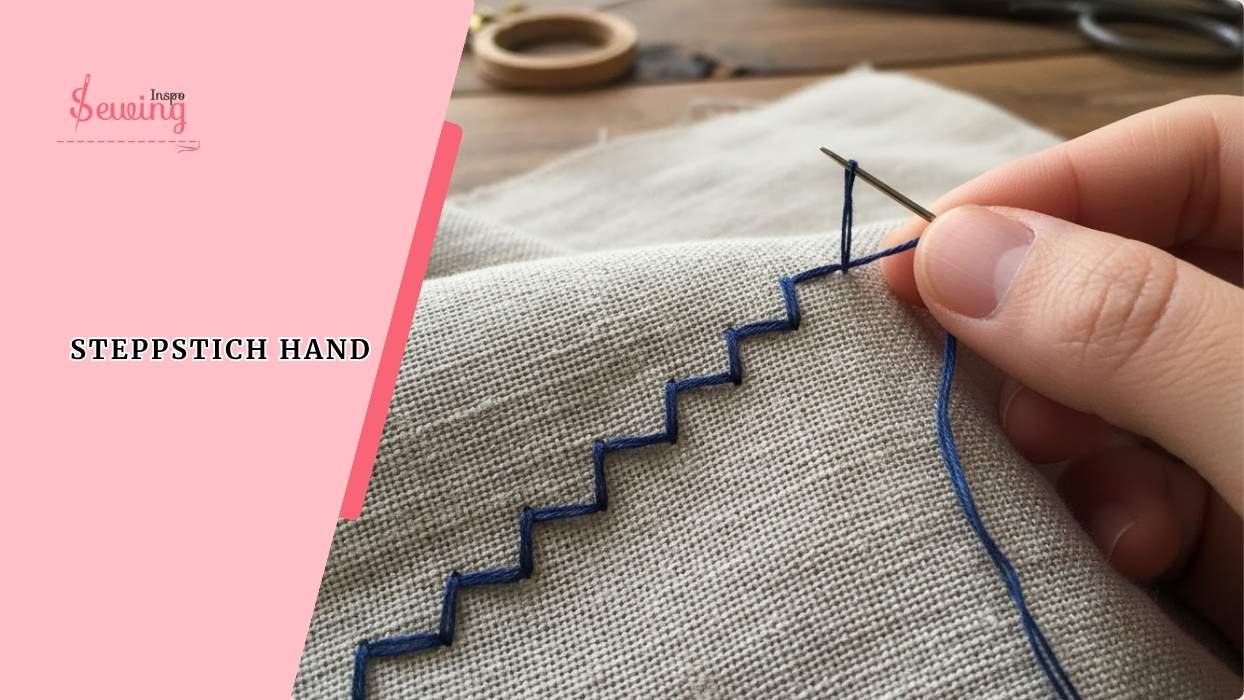
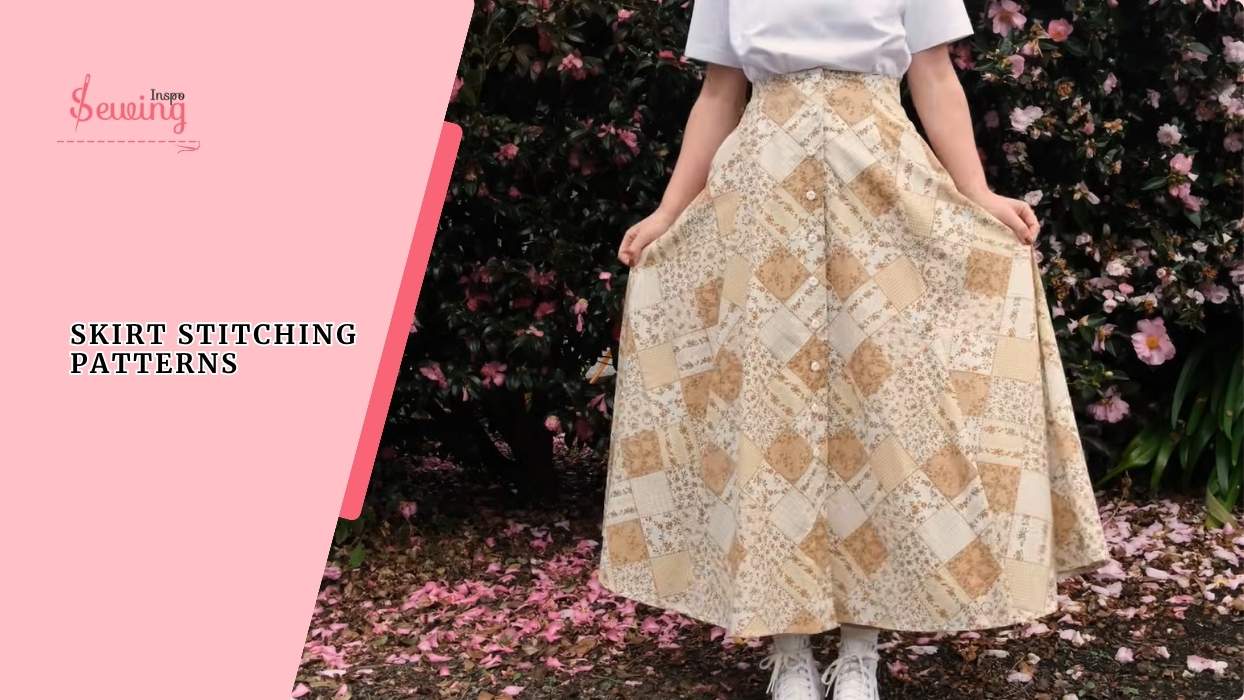
Leave a Reply